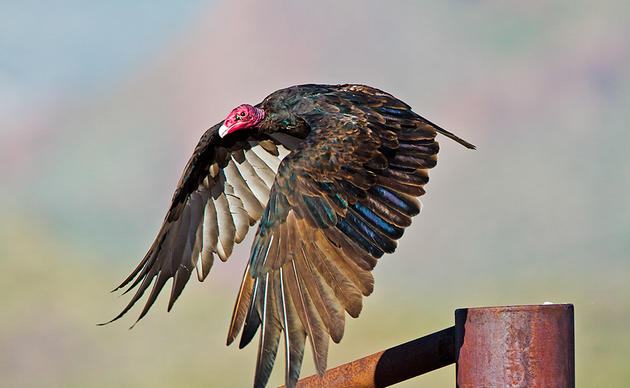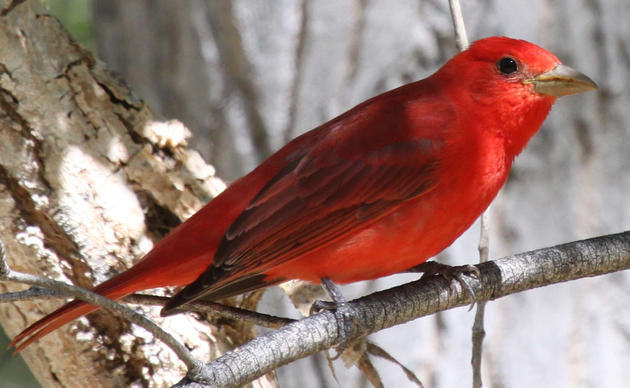Purple Loosestrife Removal
Staff and volunteers of the Kern River Preserve have spent over a decade fighting invasive species. These efforts have paid off with one of the most native forests in western North America.
Each year staff of the Kern River Preserve and partners spend many hours eradicating invasive weeds from South Fork Valley lands.
Each of us can help prevent the spread of invasive plants and animals. You can help by learning which species can become invasive and eradicate these from your own yards. Help to educate your local nurseries about the problem with invasives and get them to stop selling problem plants. Contact your legislator and local agriculture commissioner to make sure no invasives are sold or promoted in your county or town.
The article that follows is a tutorial on purple loosestrife: one of a series of articles staff of the Kern River Preserve are preparing to educate about local invasives and some steps each of us can take to help eradicate them.
Purple Loosestrife
Purple loosestrife (Lythrum salicaria), a beautiful but aggressive invader, arrived in eastern North America in the early 1800’s. Plants were brought to North America by settlers for their flower gardens. Seeds arrived via European ships that used soil as ballast to stabilize the vessel in rolling seas. Since its introduction, purple loosestrife has spread westward and can be found across much of North America. Purple loosestrife grows an impressive four to seven tall. It prolifically invades wetlands and other moist areas. Each mature plant produces 30 or more spikes and can produce over 2.5 million seeds per year.
Leaves: Green, smooth, lance-shaped, opposite/whorled, often downy
Stems: 4-sided and woody (4-7 inch tall).
Flowers: Purple-pink (5-7 petals), arranged in a dense spike
Season: Flowers mid July to September
Habitat: Wetland shorelines, roadside, drainage, and irrigation ditches, to moist agricultural fields
Controlling the spread of purple loosestrife is crucial to protecting vital fish, wildlife and native plant habitat! Purple loosestrife can easily spread if improper control methods are used.
DIGGING & HAND PULLING
Pulling purple loosestrife by hand is easiest when plants are young (up to two years) or when in sand. Older plants have larger roots that can be eased out with a garden fork. Remove as much of the root system as possible, because broken roots may sprout new plants.
CUTTING
Removing flowering spikes will prevent this year’s seeds from producing more plants in future years-- remember each mature plant can produce over 2 million seeds per year. At sites where plants have gone to seed, remove all of the flowering spikes first by bending them over a plastic bag and cutting them off into the bag. Finally, cut the stems at the ground to inhibit growth.
BIOLOGICAL CONTROL
In areas of severe purple loosestrife infestation, manual and chemical control efforts are ineffective and may in fact contribute to the problem. Bio-control works by using a plant natural enemies against it. In 1992, five insect species which feed on purple loosestrife in Europe were approved as bio-control agents in North America.
You can read more about biological controls at this website. California Dept. of Agriculture Biological Control: http://tinyurl.com/qpjmk
CHEMICAL CONTROL
If an infestation is in a dry, upland area, and on your own property, a licensed pesticide applicator can apply an approved herbicide to individual plants by selective hand spraying. Broadcast spraying is not recommended as it kills all broad-leaved plants, leaving the area open to further invasion from nearby sources of purple loosestrife. This also provides an opportunity for seeds present in the soil to sprout.
YOU CAN HELP
Ask your local garden center or nursery to stop selling purple loosestrife and its varieties (if you find it). Horticultural varieties of purple loosestrife were once thought to be sterile, but recent studies have shown that this is untrue.
Landscape with native plants instead of purple loosestrife.
PROPER DISPOSAL of plant material is important. Put all plant pieces in plastic bags (vegetation rots quickly in plastic) and take the bags to a sanitary landfill site. Composting is not advised, as purple loosestrife seeds may not be destroyed and the thick, woody stem and roots take a long time to decompose. Incineration is an effective way to dispose of plant material.
BE AWARE that your clothes and equipment may transport the small seeds to new areas. Thoroughly brush off your clothes and equipment before leaving the site.
KEEP SITE DISTURBANCE TO A MINIMUM.
Wetlands provide habitat for many native song birds, waterfowl, mammals, amphibians, and fish which depend on native wetland vegetation. Wetlands are also home to many rare and delicate plants. Take care not to trample or damage native vegetation when controlling purple loosestrife.
Read more about Purple Loosestrife and other invasive plants at the Northern Prairie Wildlife Research Center Online. http://tinyurl.com/oja3o
How you can help, right now
Visit us on Facebook
Keep up to date on everything happening at the Kern River Preserve and share highlight from your own visit.
Sign-up for Updates
Subscribe to our email list to know about upcoming festivals, volunteer days, and other events.
Make a Gift
Through the support of people like you, we can keep building a culture of conservation by working to protect wildlife habitat, cultural resources, and the diversity of life.


